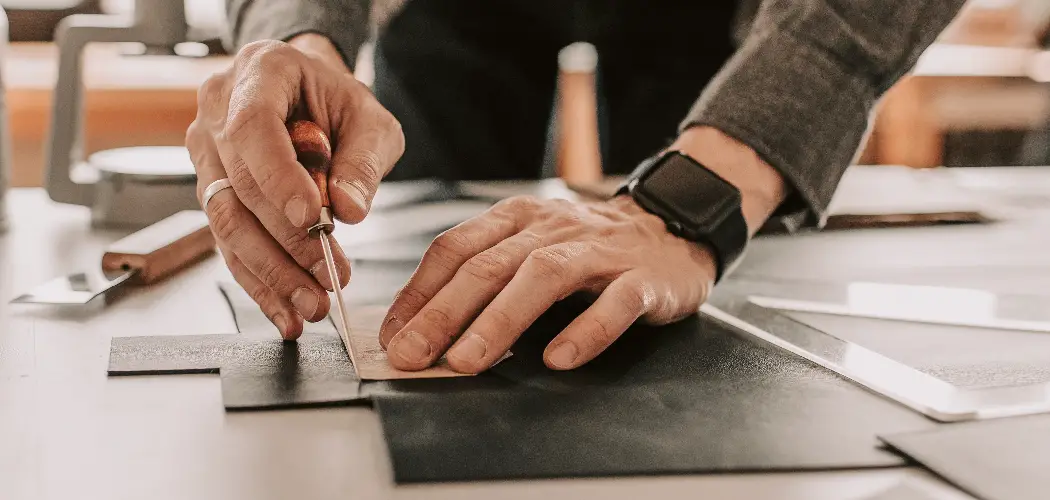Are you tired of the same old hobbies? Looking for something to get your creative juices flowing? Leatherworking may be the perfect solution! You’ll start with basic tools and techniques and eventually be able to craft items like wallets, belts, bags, and more. It’s a great way to express your unique style—so why not try it today?
If you’re just getting started, it’s important to first gather the appropriate materials. Just like with any craft, leatherworking requires a few basic tools and supplies.
In this blog post, we will discuss how you can get started with leatherworking, including the necessary tools and supplies and some tips on becoming an expert craftsman. Read on to learn everything you need to know about how to learn leatherworking!

What Will You Need?
Before you can start crafting, you need to gather the necessary materials. You will need:
- Leatherworking tools like needles, pricking irons, an awl, scissors, and more
- A range of leathers – from veg tan leather for tooling to upholstery weight leather for bags and purses
- An appropriate workspace – a large, well-lit space is ideal
- A range of dyes to customize your pieces
- Stamps and stamps to personalize your items
- Beeswax or other wax for protecting the leather
Once you have all these supplies, you’re ready to begin!
10 Easy Steps on How to Learn Leatherworking
Step 1: Start with understanding the leather
The first step in leatherworking is thoroughly understanding the leather itself. This involves learning about the different types of leather, including their textures, thickness, and how they react to tools and dyes.
Familiarize yourself with terms like ‘full grain,’ ‘top grain,’ ‘genuine,’ and ‘bonded’ leather. The more knowledge you have about the material you’re working with, the better your end products will be. Consider visiting a local leather shop or ordering a variety of leather samples to get a feel for the different kinds.
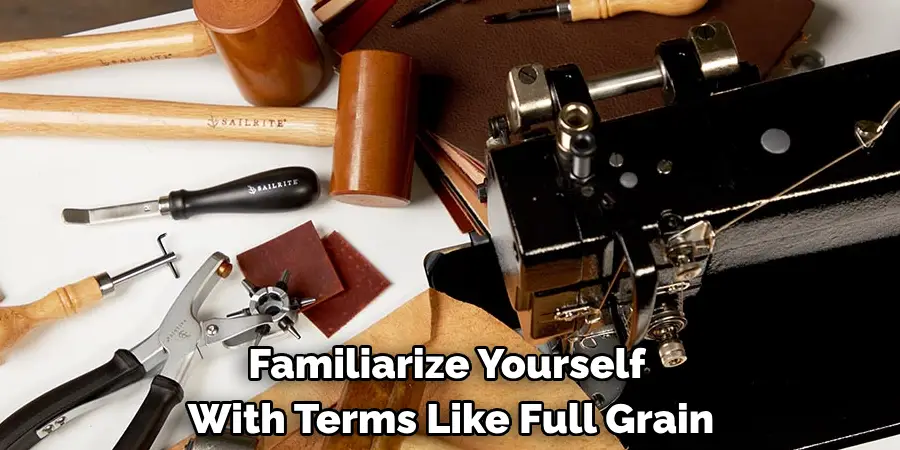
Step 2: Learn Basic Leatherworking Techniques
After understanding the properties and types of leather, the next step is to acquire basic leatherworking skills. This includes learning how to cut leather accurately, creating stitches using a needle and thread, punching holes, and skiving (thinning the edges of the leather for a more refined look).
You can find various tutorials online or consider enrolling in a leatherworking class for hands-on experience. Practice is key in honing these skills, so don’t be discouraged if you don’t get it right the first time. With patience and perseverance, you’ll gradually master these techniques and move on to more complex projects.
Step 3: Work on a Simple Project
Now that you’ve gained some basic skills, it’s time to put them to use by working on a simple project. Simple projects such as crafting a keychain, a bracelet, or a simple cardholder are ideal for beginners. These projects not only allow you to practice your cutting and stitching techniques but also give you an idea of how to work with patterns and assemble a finished product.
Remember to take your time and pay attention to the details. The more projects you complete, the more confident and skilled you’ll become in your leatherworking abilities.
Step 4: Learn Advanced Techniques
Once you’ve mastered the basics and completed a few simple projects, it’s time to start learning more advanced techniques. This could include skills such as leather tooling, burnishing, dyeing, and creating more intricate designs.
Try more complex projects like crafting a wallet or a small bag. These projects will offer a greater challenge and allow you to enhance your skills further. There are plenty of online resources and tutorials available for advanced leatherworking techniques.
Step 5: Explore Different Types of Projects
After acquiring some advanced techniques, expand your horizons by exploring different types of projects. Try crafting larger, more complex items like bags, belts, or footwear.
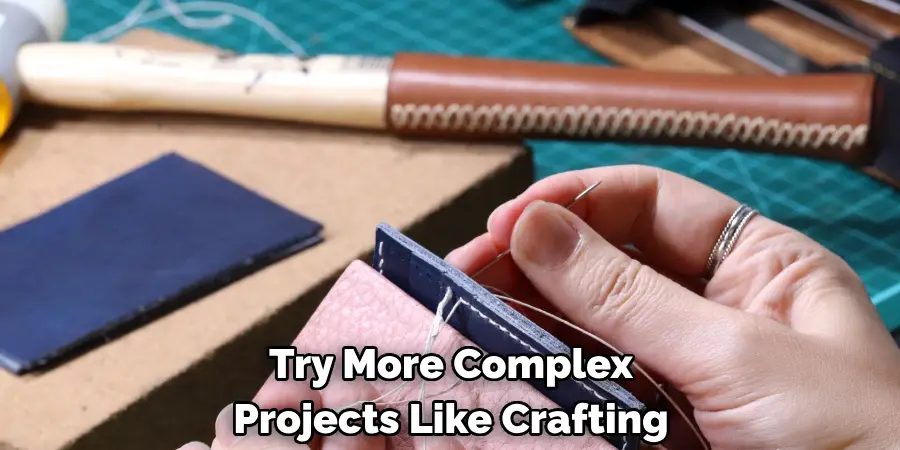
Each of these projects introduces you to new challenges and helps you refine your techniques further. Experiment with different designs, and don’t be afraid to push your limits. This is a great opportunity to discover what you enjoy the most in leatherworking and where your strengths lie.
Step 6: Join a Leatherworking Community
Engaging with a community of like-minded individuals can be extremely beneficial for your leatherworking journey. Consider joining online forums, social media groups, or local clubs dedicated to leatherworking.
These platforms provide a space for you to share your work, receive constructive feedback, learn from the experiences of others, and discover new techniques or design ideas. Participating in such communities fuels your passion for leatherworking and provides a supportive environment to help you overcome any challenges you may face.
Step 7: Develop Your Style
As you continue to improve your skills and explore different projects, you’ll naturally start to develop your own unique style. Perhaps you’re drawn to minimalist designs with clean lines, or you prefer more ornate, traditional leather tooling.
Whatever your preferences, embrace them and let them guide your work. Remember, the goal of leatherworking isn’t to replicate others’ work but to create something that’s distinctly your own. Experiment with various techniques, patterns, and types of leather to see what resonates with you.
Step 8: Start Selling Your Work
Once you’re confident in your skills and have developed your own style, consider starting to sell your leather goods. This could be as simple as setting up an online shop on platforms like Etsy, participating in craft fairs, or even approaching local boutiques to stock your items.
Not only can this help offset the costs of your materials, but it also provides a fantastic opportunity to receive customer feedback and understand the most popular designs and items. Plus, there’s nothing quite as rewarding as having someone else appreciate and purchase something you’ve created with your own hands.
Step 9: Keep Learning
Learning never stops in leatherworking – it’s an ongoing process. As you explore new projects and techniques, keep an open mind and challenge yourself to refine your skills constantly. Pay attention to trends in the industry, find inspiration from other makers, and continue developing new product ideas.
There’s always more to learn in this craft, so don’t be afraid to push the boundaries and try something new.
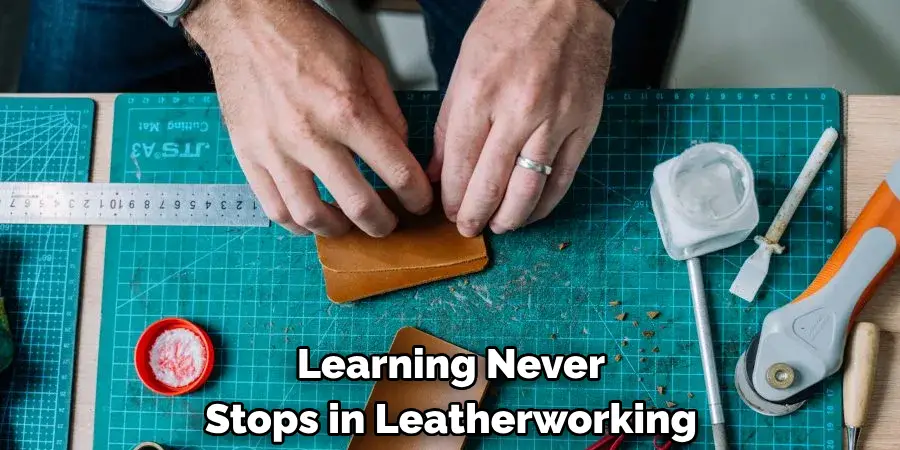
Step 10: Have Fun With It
Last but not least, remember to have fun with it! Leatherworking is an incredibly rewarding craft that offers endless creative opportunities for you to explore. So don’t get too caught up in the details, and don’t be afraid to make mistakes. Embrace each project as an opportunity to learn something new and, above all, enjoy the process of creating something with your own hands.
By following these ten steps, you’ll be well on your way to becoming a skilled leatherworker. So don’t delay – start learning today and make something amazing! With practice and dedication, you can achieve great things in this craft. We wish you the best of luck on your leatherworking journey!
5 Additional Tips and Tricks
- Invest in high-quality tools and materials – Using low-grade tools and materials could hinder your progress, so it’s worth investing in good quality leather, needles, and other essential items.
- Ensure your workspace is well-lit – Poor lighting can make it difficult to see small details, so make sure your work area is brightly lit.
- Practice on scrap leather first – If you’re attempting a new technique, try it out on a piece of scrap leather before working on your main project. This will help prevent costly mistakes and allow you to perfect the skill.
- Take your time – Leatherworking is a slow and meticulous craft, so don’t rush it or try to take shortcuts. Quality takes time, so be patient and work through each step carefully.
- Have fun and stay inspired! – Leatherworking can sometimes be challenging, but you should still remember why you enjoy it. Take breaks, keep a positive mindset, and find inspiration from other makers.
With these tips and tricks, you can make the most of your leatherworking journey.
5 Things You Should Avoid
- Using low-quality tools – Low-quality tools can make it harder to get the desired results, so invest in good quality tools and materials.
- Working in a poorly lit space – Poor lighting makes it difficult to see small details, so ensure your work area is well-lit.
- Rushing through projects – Leatherworking takes time and precision, so avoid rushing or taking shortcuts.
- Skipping steps – Follow each process step carefully to get the best results.
- Comparing yourself to others – Everyone’s journey in leatherworking is unique, so don’t compare your work to that of other makers. Instead, focus on developing your style and learning new techniques.
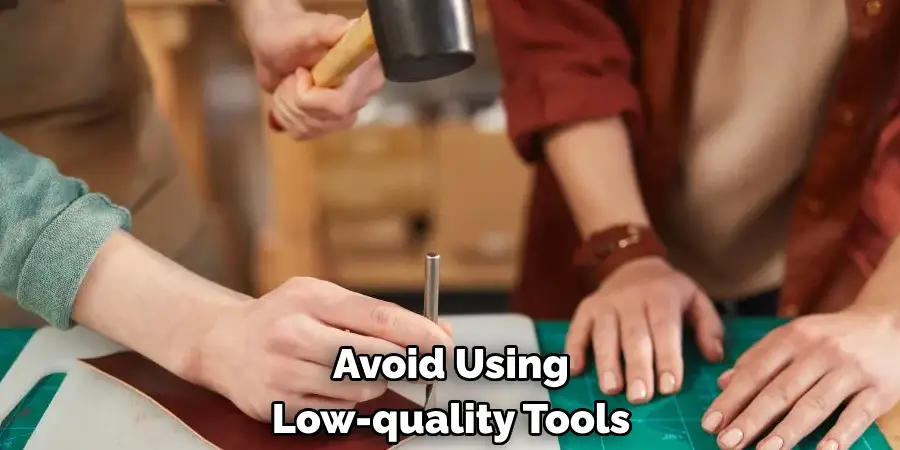
By avoiding these common mistakes, you’ll be able to make the most of your leatherworking experience. So don’t delay – start exploring this craft today!
Conclusion
How to learn leatherworking is an enjoyable and rewarding process. Whether you are new to working with leather or have been in the trade for decades, there is always something to learn and new techniques to master. The possibilities of leatherworking are endless, so don’t be afraid to get creative.
With some patience and hard work, you will soon succeed in this enduring craft and create beautiful works of art you can take pride in. If you’re ready to dive into the world of leatherworking, check out workshops in your area or online classes that will teach you the basics so you can start your journey on the right foot.
Once you’ve mastered these fundamentals, pick a project and challenge yourself by taking it to the next level!

